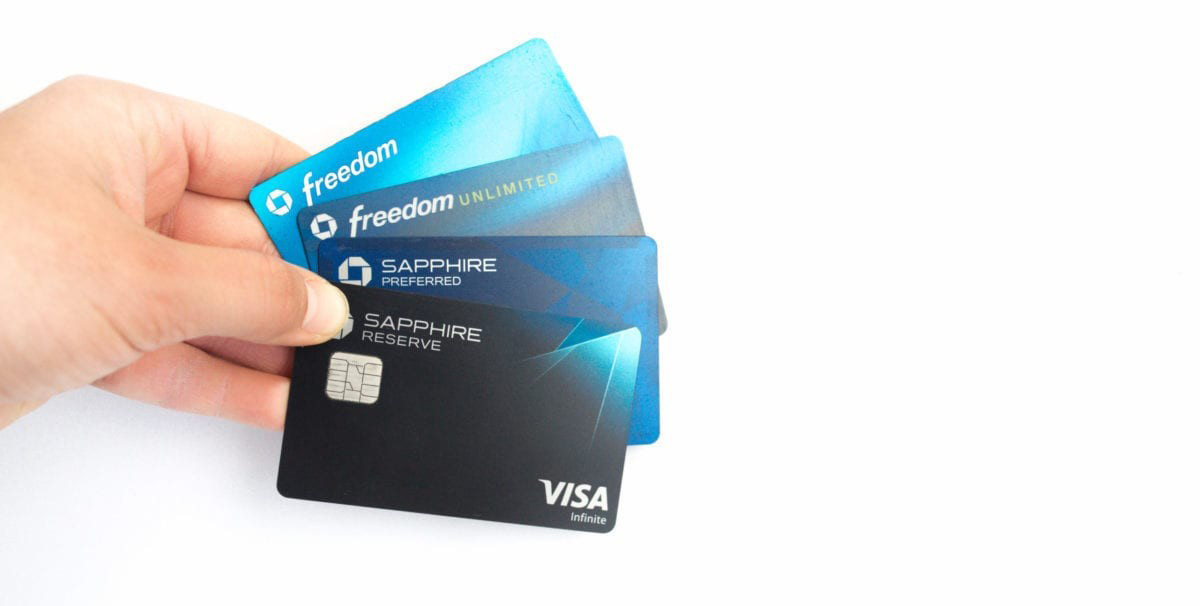

Finance
How To Do A Balance Transfer With Chase
Published: February 18, 2024
Learn how to do a balance transfer with Chase to manage your finances more effectively. Find out the steps and benefits of transferring your balance.
(Many of the links in this article redirect to a specific reviewed product. Your purchase of these products through affiliate links helps to generate commission for LiveWell, at no extra cost. Learn more)
Table of Contents
Introduction
Welcome to the world of balance transfers with Chase! If you’ve been carrying a balance on a high-interest credit card, a balance transfer can be a savvy financial move to help you save money and pay off your debt more efficiently. In this comprehensive guide, we will walk you through the process of executing a balance transfer with Chase, one of the leading financial institutions offering this service.
Understanding the intricacies of balance transfers and how to leverage them to your advantage is crucial for anyone looking to manage their credit card debt effectively. By transferring your existing credit card balance to a Chase card with a lower or 0% introductory APR, you can potentially save hundreds or even thousands of dollars in interest payments, allowing you to pay down your debt faster.
However, it’s important to approach balance transfers with a clear understanding of the process, potential fees, and the impact on your credit score. With this guide, we aim to demystify the balance transfer process with Chase, empowering you to make informed decisions about managing your credit card debt.
Whether you’re new to balance transfers or seeking to optimize your existing financial strategy, this guide will provide you with the knowledge and insights needed to navigate the world of balance transfers with confidence. Let’s embark on this journey to discover how you can take control of your credit card debt and make the most of the valuable tools offered by Chase.
Understanding Balance Transfers
Before delving into the specifics of executing a balance transfer with Chase, it’s essential to grasp the fundamental concept of balance transfers and their potential impact on your financial well-being. A balance transfer involves moving existing credit card debt from one or multiple accounts to a new credit card, typically with a lower interest rate or a promotional 0% APR for a specified period. By doing so, you can consolidate your debt and potentially save money on interest payments, making it easier to pay off what you owe.
When considering a balance transfer, it’s crucial to weigh the benefits against any associated fees and the potential impact on your credit score. While a lower interest rate can lead to significant savings, balance transfer fees, typically ranging from 3% to 5% of the transferred amount, may offset some of these savings. Additionally, opening a new credit account and transferring a balance can influence your credit score, albeit temporarily.
Chase offers a range of credit cards with competitive balance transfer offers, allowing eligible cardholders to take advantage of lower introductory APRs and favorable terms. Understanding the terms and conditions of the balance transfer offer, including the promotional APR period, ongoing interest rates, and any applicable fees, is crucial to making an informed decision.
By leveraging a balance transfer with Chase responsibly, you can streamline your debt repayment strategy and potentially reduce the financial burden of high-interest credit card balances. However, it’s important to approach balance transfers with a clear plan for debt repayment and a commitment to responsible financial management to maximize their benefits.
Checking Eligibility for a Balance Transfer with Chase
Prior to initiating a balance transfer with Chase, it’s essential to determine your eligibility for this financial maneuver. Chase typically extends balance transfer offers to individuals with good to excellent credit scores, although specific eligibility criteria may vary based on the selected credit card and the applicant’s overall financial profile.
One of the primary factors influencing your eligibility for a balance transfer with Chase is your creditworthiness. Lenders assess an individual’s creditworthiness based on various factors, including their credit score, payment history, credit utilization, and overall financial stability. A higher credit score and a positive credit history increase the likelihood of being approved for a balance transfer with favorable terms, such as a low introductory APR and minimal fees.
When considering a balance transfer with Chase, it’s advisable to review the specific eligibility requirements for the targeted credit card. Some Chase credit cards may have stringent criteria for balance transfer offers, while others may be more accessible to a broader range of applicants. Understanding the issuer’s requirements and aligning them with your financial standing can help you gauge your eligibility and make an informed decision.
Additionally, existing Chase cardholders may be eligible for balance transfers to their current accounts, provided that the selected card offers this feature and that the transfer amount does not exceed the available credit limit. It’s important to review the terms and conditions of your existing Chase credit card to ascertain the availability of balance transfers and any associated limitations.
Before proceeding with a balance transfer, it’s prudent to check your credit report, assess your current financial situation, and review the specific eligibility criteria for balance transfer offers with Chase. By doing so, you can determine whether you meet the necessary requirements and are well-positioned to leverage this financial tool to your advantage.
Applying for a Balance Transfer with Chase
Once you’ve determined your eligibility and identified a suitable Chase credit card for a balance transfer, the next step involves initiating the application process. Applying for a balance transfer with Chase entails several key considerations to ensure a seamless and efficient transfer of your existing credit card debt.
Before proceeding with the application, it’s essential to select the most appropriate Chase credit card that aligns with your financial goals and offers favorable terms for balance transfers. Consider factors such as the promotional APR period, ongoing interest rates, balance transfer fees, and any additional benefits or rewards associated with the card. By carefully evaluating these aspects, you can choose a credit card that best suits your needs and maximizes the potential savings from the balance transfer.
Chase typically provides multiple channels for credit card applications, including online applications through their website, in-person applications at Chase branches, and via phone. The online application process is often the most convenient and allows for a streamlined submission of required documents and information. During the application, you will need to provide personal details, financial information, and consent to undergo a credit check, which is standard practice for evaluating credit card applications.
When completing the credit card application, you will have the opportunity to indicate your intent to initiate a balance transfer. This involves providing the account numbers and transfer amounts for the existing credit card balances you wish to transfer to the new Chase card. It’s crucial to accurately input this information to facilitate a smooth and accurate transfer process.
Upon approval of your Chase credit card application, the balance transfer request will be processed, and the specified amounts will be transferred from your existing credit accounts to your new Chase card. It’s important to monitor the progress of the balance transfer and verify that the transferred amounts align with your instructions. Additionally, familiarize yourself with the terms and conditions governing the balance transfer, including the promotional APR period and any applicable fees.
By navigating the application process diligently and proactively managing the balance transfer details, you can optimize the benefits of transferring your credit card balances to a Chase card, setting the stage for more efficient debt repayment and potential interest savings.
Managing Your Balance Transfer with Chase
Upon successfully completing a balance transfer to your Chase credit card, effective management of the transferred balance is crucial to optimizing the benefits and ensuring a smooth repayment process. By implementing proactive strategies and staying informed about the terms of the balance transfer, you can navigate this financial maneuver with confidence and control.
One of the primary considerations in managing your balance transfer with Chase is to adhere to the terms and conditions associated with the promotional APR period. During this introductory period, your transferred balance may accrue minimal or no interest, providing a valuable window to make substantial progress in paying down your debt. It’s essential to stay mindful of the promotional period’s duration and strive to allocate funds towards reducing the transferred balance within this timeframe.
Furthermore, maintaining timely and consistent payments on your Chase credit card is vital to sustaining the benefits of the balance transfer. Missing payments or carrying a balance beyond the promotional period can result in the accrual of standard interest rates, potentially negating the initial savings achieved through the balance transfer. By prioritizing on-time payments and diligently managing your credit card utilization, you can fortify your financial stability and creditworthiness.
Regularly monitoring your Chase credit card statements and online account portal is instrumental in tracking the progress of your balance transfer and staying informed about any associated fees or changes in the terms of the promotional offer. This proactive approach enables you to detect any discrepancies or issues promptly and take corrective action as necessary.
As you work towards paying off the transferred balance, consider developing a structured repayment plan that aligns with your budget and financial goals. By allocating additional funds towards reducing the transferred balance whenever possible, you can expedite the debt repayment process and minimize the overall interest accrued.
Engaging with Chase’s customer support or online resources can provide valuable insights and guidance on effectively managing your balance transfer. Leveraging these resources can enhance your understanding of the balance transfer process and empower you to make informed decisions regarding your debt repayment strategy.
By actively overseeing and managing your balance transfer with Chase, you can harness the potential savings and debt relief offered by this financial tool, ultimately advancing towards a more secure and sustainable financial future.
Conclusion
Congratulations on embarking on the journey to explore the intricacies of balance transfers with Chase! As you conclude this insightful guide, it’s essential to reflect on the valuable knowledge gained and the potential impact on your financial well-being. By understanding the nuances of balance transfers and the specific process involved with Chase, you are better equipped to make informed decisions and leverage this financial tool to your advantage.
Balance transfers offer a strategic pathway to managing and reducing credit card debt, with Chase providing a range of credit cards featuring competitive balance transfer offers. The opportunity to transfer existing high-interest balances to a Chase card with a lower or 0% introductory APR can yield substantial interest savings and expedite the journey towards debt freedom.
Throughout this guide, you’ve gained insights into the eligibility criteria for balance transfers with Chase, the application process, and the essential strategies for managing your transferred balance effectively. By navigating these key elements with prudence and diligence, you can harness the potential benefits of a balance transfer while safeguarding your financial stability.
As you proceed with a balance transfer and manage your Chase credit card, it’s imperative to remain proactive and vigilant in adhering to the terms of the promotional offer, maintaining consistent payments, and monitoring your progress towards debt repayment. By integrating these practices into your financial routine, you can optimize the advantages of the balance transfer and pave the way for a more secure and empowered financial future.
Remember, the journey towards financial well-being is a continual process, and each step taken towards prudent debt management and responsible credit card utilization contributes to your long-term financial resilience. By leveraging the insights and strategies presented in this guide, you are empowered to navigate the realm of balance transfers with Chase confidently and embark on a path towards enhanced financial freedom and stability.
Armed with this knowledge, you are poised to make informed decisions, seize opportunities for savings, and chart a course towards a brighter financial future. Embrace the potential of balance transfers with Chase as a strategic tool in your financial arsenal and take confident strides towards achieving your debt management goals.














